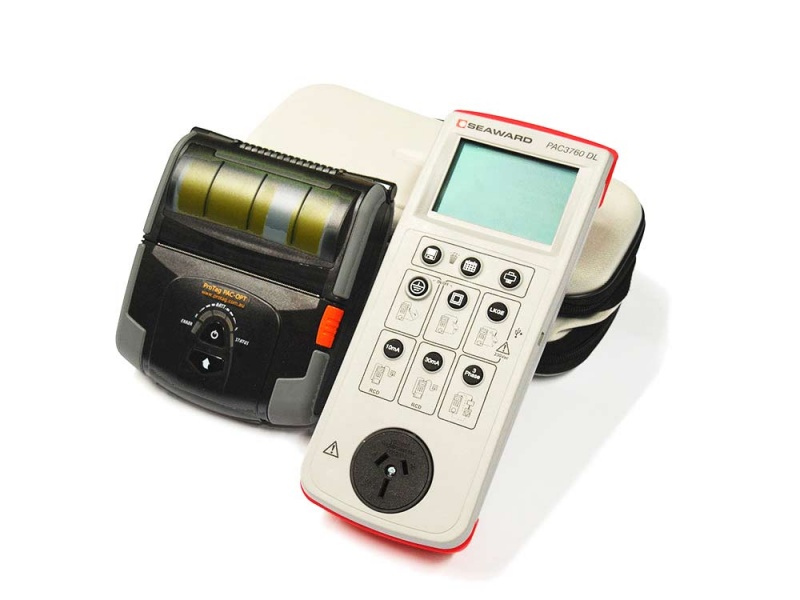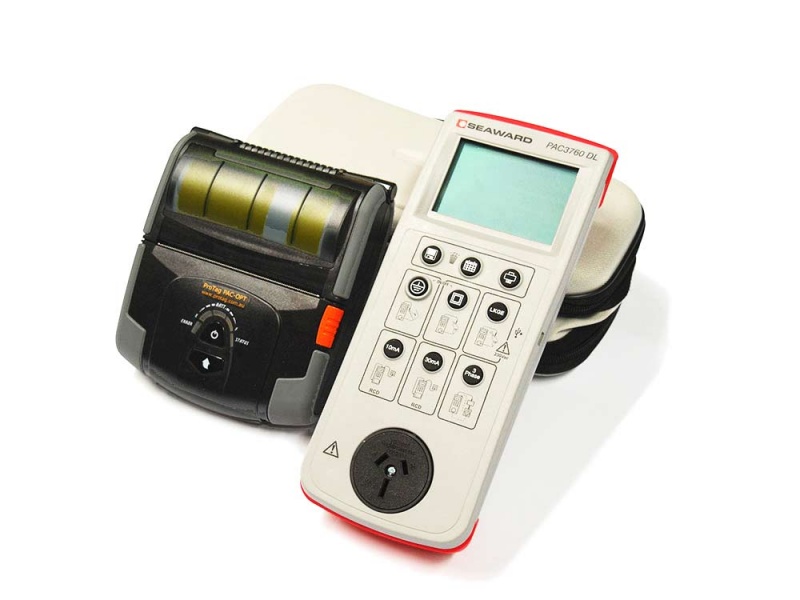Today we are going to review another Pat from a very popular manufacturer, that being the Seaward 125 EL.
Seaward ownership changed a few years back and it will be interesting when they bring out something really new, or will they ?

We haven’t really seen anything particularly different than upgrades or off shoots from previous models this model PT 125 EL is just another of these but as stated it’s the cheapest on the Australian market!
The question is then what do you get from this tester ie is cheap good or is it more expensive overall when considering the bigger picture.
The Pat is small and light and easily handheld, maybe not surprising it doesn’t have the standard Seaward case, obviously this would add cost and if your penny pinching anything could be on the chopping block! So find your own case.
Battery operation is possible for all tests except the leakage test, batteries are not rechargeable, obviously this saves space and cost.
Operating the tester is very simple and this goes back to how the original Seaward PAC 3760 worked ie 3 push button switches.
The display is pretty much a standard Seaward display for this standard case Seaward like to use and to be fair it does the job adequately.
Pass/ fail as well as ticks and crosses are displayed as well as the actual measured values, the measured values are especially useful for the more conscientious testing person.
Though this Pat may not be the tester of choice for those concerned with safety not mere compliance … we will cover that later.
A better warning system would be helpful for some users to remind them the Pat is about to power up an appliance or tool ( might save a finger or two)
Next we can look at the test functions.
Earth Bond test
No surprises here compliance with ASNZS3760 is possible on mains or battery.
Like rest of the recent Seward range, we believe it is a stretch to call measuring the protective earth resistance at 200 milliamps an earth bond test.

So the real earth bond test of 10 or 25 amps are missing, we understand that these high current tests aren’t a legal requirement however for those concerned with breathing, testing the earth’s integrity may help to ensure you or someone you know continues to do so!
We think testing should prove something worthwhile ie will it really work if it needs to, or why bother testing at all!
We mentioned before the first Seaward in the same case was called the PAC 3760, this tester did perform a true earth bond test at 10 amps, unfortunately this was discontinued years back.
500 volt Insulation Resistance test
We are happy to say this works fine, however there is no option for testing at 250 volts so if your trying to use this Pat on batteries and need to test power boards and the like with surge protection you’ll need to choose another Pat.
Leakage Testing
Leakage testing on both class 1 and 2 is easily performed when mains powered however it is extremely likely you will struggle to test things like large angle grinders, compressors and the like due to both the momentary high inrush current and also in some instances appliances with very little current draw.
Maybe due to the above get a demo on your own gear, not much point buying something that won’t work FOR YOU.
Note
The maximum rating of the appliance being tested has to be no more than 10 amps
RCD tests
This unit has no RCD test function, this isn’t surprising considering the price.
Other features
Nothing else here of any significance, no memory or print option again not to be expected considering the price.
So how does this Pat from a big brand stack up on the big three questions.
- Does it enable compliance with ASNZS3760 ? Yes but only for the test functions available ie not if you need to test RCD’s .
- Is it a safety tester or compliance only Pat ? Compliance only
- Value for money ? For some it may be a good cheap buy, but for others not a good buy, ie slow testing process , no results, hand written tags, limited and indefinite range of appliances it can test, no RCD test function.
Summing up considering Seawards been building Pat’s longer than most we find this Pat quite disappointing, likely buyers will be purely price driven short sited people who aren’t really concerned with safety!
Now for the score, we rate this a 2+ out of 5.
Happy testing from the team at Pat reviews

